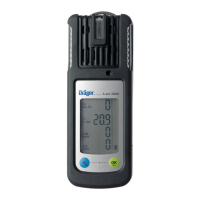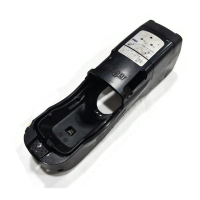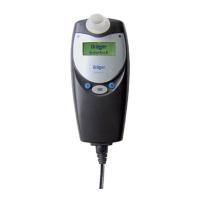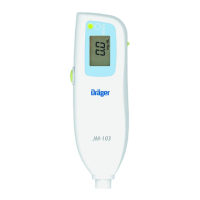77
Gerät kalibrieren / justieren
— Vor der Kalibrierung / Justierung muss der jeweilige Sensor ein-
gelaufen sein! Einlaufzeit: siehe Sensor-Datenblätter und Anzeige
im Display.
— Bei einigen Sensoren (z. B. Sauerstoff-Sensoren), erfolgt in der
Funktion »
Nullpunkt « eine Überprüfung des Sensors. Die Funk-
tion führt nicht zur Justierung, da der Nullpunkt bei diesen Senso-
ren nicht justiert werden muss.
— Bei kritischen Anwendungen:
Festlegung des Justierintervalls in Anlehnung an EN 60079-29-2
*)
bzw. EN 45544-4
**)
und nationale Regelungen.
Reihenfolge beachten!
● Zuerst Nullpunkt kontrollieren und bei Korrektur unmittelbar im
Anschluss die Empfindlichkeit überprüfen und gegebenenfalls
justieren.
— Niemals Empfindlichkeit vor Nullpunkt justieren.
— Zuerst EC-Sensoren, anschließend IR-Sensor und CA-Sensor ka-
librieren.
Für die EC Sensoren:
● Nullpunkt und Empfindlichkeit justieren.
Für den CatEx-Sensor:
● Nullpunkt Wärmetönung (WT), Nullpunkt Wärmeleitung (WL) und
Empfindlichkeit Wärmetönung justieren. Empfindlichkeit Wärme-
leitung zusätzlich justieren für Messungen größer 100 % UEG CH
4
.
*) EN 60079-29-2 – Gasmessgeräte - Auswahl, Installation, Einsatz und War-
tung von Geräten für die Messung von brennbaren Gasen und Sauerstoff.
**) EN 45544-4 – Elektrische Geräte für die direkte Detektion und direkte Kon-
zentrationsmessung toxischer Gase und Dämpfe – Teil 4: Leitfaden für die
Auswahl, Installation, Einsatz und Instandhaltung.
Calibrating and adjusting the instrument
— Allow the sensor to be calibrated to warm up before starting
calibration! See the sensor data sheet and the display for the
required warming-up times.
— For some sensors (such as oxygen sensors), the function
»
Zero point « is actually a test of the sensor. The function does not
execute calibration since the zero point of these sensors does not
need to be calibrated.
— For critical applications:
Define the calibration interval in accordance with EN 60079-29-
2
*)
and/or EN 45544-4
**)
and any applicable national regulations.
Note the sequence of operations!
● Always check the zero point first. Correct this if necessary and
then immediately check the sensitivity and correct it as necessary.
— Never calibrate the sensitivity before the zero point.
— First calibrate the EC sensors, then the IR sensors and finally the
CA sensor.
For the EC sensors:
● Adjust the zero point and the sensitivity.
For the CatEx sensor:
● Adjust the zero point for thermal tone (LEL), the zero point for
thermal conduction (TC) and the sensitivity for thermal tone (LEL).
For measurement of values greater than 100% LEL CH
4
also
adjust the sensitivity for thermal conduction.
*) EN 60079-29-2 - Gas measuring devices - Selection, installation, use and
maintenance of apparatus for the measurement of combustible gases or oxy
-
gen.
**) EN 45544-4 – Electrical devices for the direct detection and direct
concentration measurement of toxic gases and vapours – Part 4: Guidelines
for selection, installation, use and maintenance.
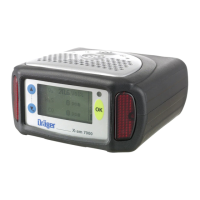
